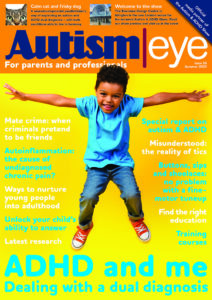Scientists say a drug used to treat swelling can also improve the core symptoms of autism.
Researchers in France trialled bumetanide over three months. They carried out the tests on 88 children with autism aged between two and 18. After 15 of them dropped out, 73 completed the trial.
Doctors normally use bumetanide to treat water retention.

Dr Yehezkel Ben-Ari: his French biotechnology firm is leading research into bumetanide as a treatment for autism
The researchers suggest that children who completed the trial “significantly improved” their scores on the Childhood Autism Rating Scale (CARS).
Also, 23 treated children had more than a six-point improvement in the CARS. This compared with only one child making such progress after receiving a placebo (an inactive treatment for comparison).
Drug launch predicted by 2021
Researcher Dr Yehezkel Ben-Ari said his team now hopes to carry out a larger study on 370 children.
In an email he wrote: “This will, if successful, allow (us) to have a drug in the market by the end of 2021.”
Ben-Ari is president and co-founder of Neurochlore. The French biotechnology company holds the rights to bumetanide as an autism treatment.
Researchers divided the children into four age groups. They then gave the children bumetanide in 0.5mg, 1mg or 2mg doses twice daily.
Benefits and risks
The scientists concluded that the drug “presents a favorable benefit/risk ratio” at 1mg twice daily.
They say bumetanide works by affecting a chemical messenger, gamma-aminobutyric acid (GABA), which is thought to be important in autism.
But the children reported a number of side-effects. The scientists admit that the trial had “several important limitations”.
One of the side-effects was hypokalemia, which refers to low levels of potassium in the blood. Other side-effects were abnormal heart rhythms, excessive urinating, loss of appetite and anorexia.
The trial was double-blind and randomised. Neither researchers nor parents were aware of which children took the placebo or the bumetanide.
However, the researchers acknowledge that the “diuretic actions”, or excessive visits to the toilet caused by bumetanide, “impact the blinding procedure”.
The trial was published in Translational Psychiatry.
Published: 30 March 2017















